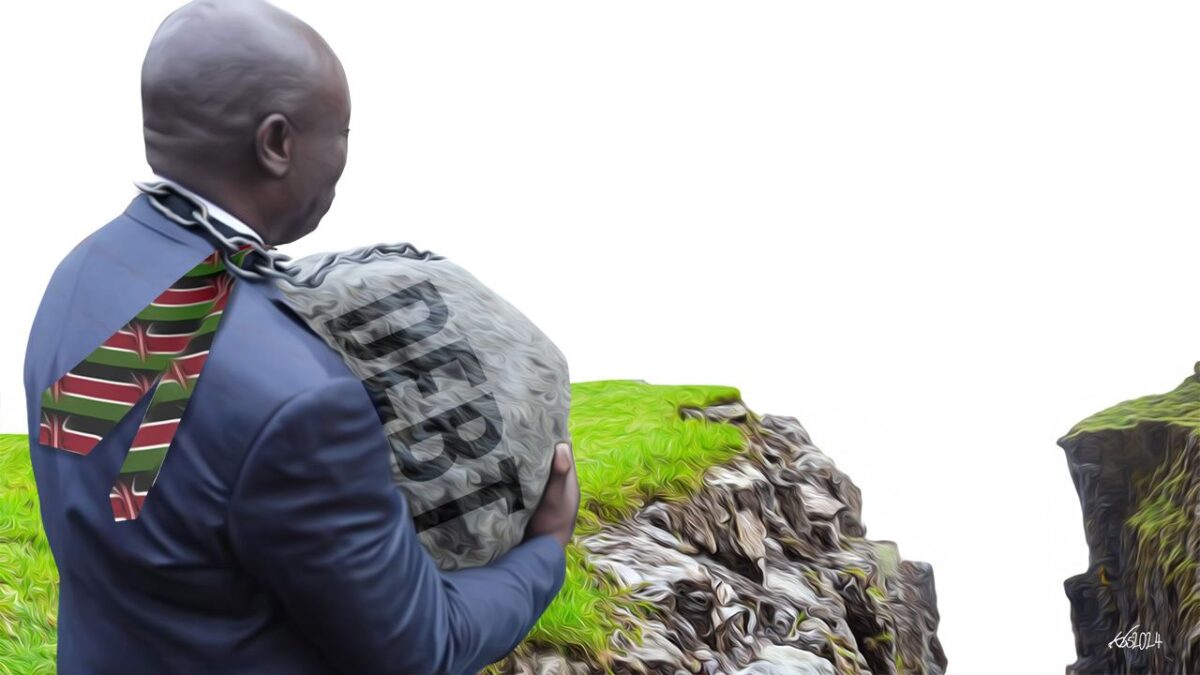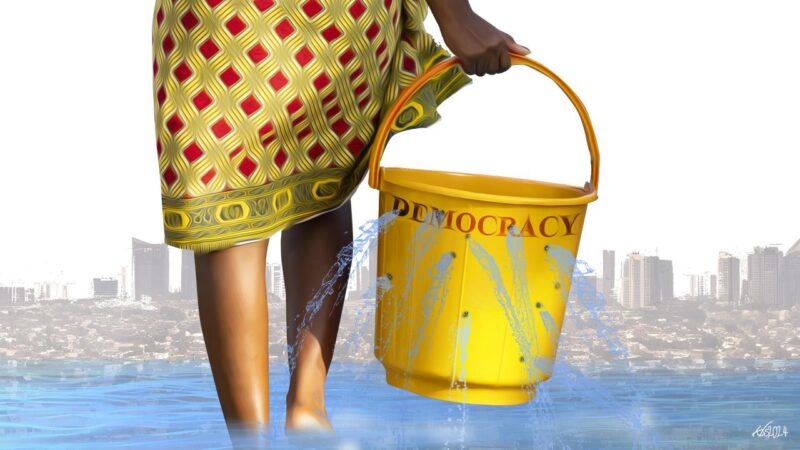For the second time in my 34 years as a newspaper journalist, Kenya is turning itself over to the IMF and the World Bank to treat economic ills that have been brought about by over a decade of economic mismanagement.
People of a certain age will tell you from our last experience with the Bretton Woods institutions – as our new financial directors are also known – that this measure can only end in tears for the vast majority of Kenyans.
It’s a tired cliché but history does seem to repeat itself quite a lot in Kenya. I’ve been a journalist for just over 34 years and while I am now based mainly in South Africa, and have been for the last 12 years or so, I have been on a long sabbatical in Kenya.
Being here for an extended period after a few “blink and you’ll have missed me” visits over the last decade, has helped me get in touch again, as much as one can on such a visit, with how things are on the ground.
While abroad, it’s very easy to rely on social media posts from one’s own echo chamber, in other words, people who think and believe the same things as oneself, for news of what’s going on at home. But as a journalist I am well aware that it is one thing to be told that it is raining and quite another to go outside and see for yourself before you make your own conclusions about the weather.
Does our history repeat itself? Or do our leaders just keep looking back to the playbooks of their predecessors and try to ape what they perceive to be the winning moves of the past to steer us into the future they want?
When I use the term “perception” here, I mean it in the sense of how things are regarded, understood, or interpreted.
So for instance the current Kenyan leadership, which appears to be harking back to the early 1990s, when figures such as President William Ruto, Deputy President Rigathi Gachagua and Prime Cabinet Secretary Musalia Mudavadi, for instance, were making their bones or establishing their bona fides as players in governance under the tutelage of President Daniel arap Moi.
Mudavadi inherited his father’s seat in parliament and was made a cabinet secretary in 1989; Gachagua was working in the Office of the President as a District Officer cadet in 1991/2, and in 1992 Ruto was getting his introduction to national politics from President Moi as a leading member of the infamous YK’92 lobby group.
In the early 1990s, Kenya was in a state of flux following a widely criticised general election in 1988 that had seen certain political forces come together with certain voices from the Christian clergy to call for political and economic reforms. These groups were basically saying that the road the country had taken since the crackdown on dissent in the early 1980s was the wrong one.
The crackdown on dissent and voices opposing the Moi/Kanu narrative led to the June 1982 amendment of the constitution to make Kenya an official one-party state, thus effectively blocking any opposition.
During the 1980s the economy had taken a number of hits from drought, famine, economic mismanagement and corruption that saw a tiny elite connected to the state become increasingly wealthier as the majority of citizens were pushed further into poverty.
Meanwhile there were tectonic shifts in world politics, such as the end of the Cold War, the 46-year-long period of geopolitical tension between the USA and the former Soviet Union and their allies that saw countries such as Kenya being pulled in new directions.
In 1991, the then American president, George HW Bush referred to the establishment of a New World Order, signifying that change was coming and no nation would remain untouched.
Under siege from within and without, President Moi and the ruling Kanu party were pressured to make economic and political changes in the way Kenya was being run. These changes, especially the economic ones dictated by Western donor nations, the International Monetary Fund and the World Bank, would push the country into a decade and more of pain and darkness that tested all Kenyans.
During the last couple of months, contemporary headlines and news stories about issues such as the economy and their relation to the IMF and the World Bank, and the social impact they are having and will continue to have in the foreseeable future, have reminded me of similar scenarios in the late 1980s and early 1990s.
Under siege from within and without, President Moi and the ruling Kanu party were pressured to make economic and political changes in the way Kenya was being run.
I recently joked on Twitter that if I were a conspiracy theorist I might believe that Kamau Thugge, the current governor of the Central Bank, who began his working life and spent 20 years at the IMF before joining the Kenya government in 2005 or thereabouts, was an “IMF sleeper agent”.
No matter how you slice and dice it, the bitter pill of the old Structural Adjustment Programmes – or SAPS – of the 1980s is back on the menu, and once again there appears to be no escape for the ordinary, long-suffering Kenyan.
The SAPs were a series of economic and political reforms initiated by the IMF and the World Bank in Kenya beginning in 1988 and accelerating after 1991. They transformed pretty much every aspect of Kenyan daily life and social scientists such as Joseph Kipkemboi Rono of the Department of Sociology, Moi University linked SAPS to “the high rate of income inequality, inflation, unemployment, retrenchments and so on, which have lowered the living standards, as well as to an increased crime rate, ethnic hatred and discrimination and welfare problems, especially in the areas of education and health”.
Granted, times were different then in that between 1991 and 1993, for instance, Kenya was transitioning from a one-party dictatorship where the views of one man and a few of his cronies and lieutenants carried the day, into a multi-party democracy where there was a contestation of views about what was right or wrong for the country, giving people a choice.
At the end of the day, however, the government of the day in the 1990s had enough of a majority to decide how things went, no matter how much the opposition disagreed or protested and I guess that has not changed.
Back then, as now, the Kenya government was under the direction of the IMF and the World Bank and obeyed the instructions from those two institutions as though they had been chiselled on stone tablets and delivered from God via a burning bush.
Take, for instance, the recent announcement that the Kenya Pipeline Company and 10 other parastatals and state corporations, including strategic institutions such as the National Oil Corporation, the Kenya Literature Bureau and the Kenya Seed Company Limited, are to be sold.
On 1 July 1991, the Kenya government announced the privatisation of 139 of the 250 firms in which it owned shares. The companies and parastatals were generally successful, profit-making companies.
Among the companies that the state withdrew from included African Tours and Hotels, Associated Vehicle Assemblers, Bamburi Portland Cement, Dawa Pharmaceuticals, East Africa Industries, Firestone, General Motors, ICDC, Minet insurance, and Kenya Breweries.
This disinvestment was described as “earth shaking” at the time, and the whole exercise was being undertaken at the behest of the Bretton Woods institutions under the guise of implementing the government’s own privatisation of non-strategic parastatals. Basically, the sell-off was positioned as being the government’s own idea even though the same government had on previous occasions tried to drag its heels in the process.
On 1 July 1991, the Kenya government announced the privatisation of 139 of the 250 firms in which it owned shares.
The privatisation policy had first been hinted at in April the previous year, 1990, in a press release by then Finance Minister Prof George Saitoti. The government had seemingly gone cold on the matter until President Moi revived it in his 1991 Labour Day speech.
In that speech Moi said the privatisation programme would be part of a comprehensive strategy to restructure the parastatal sector which he claimed had been a great drain on the country’s resources. That speech was followed by more mention of the process in Saitoti’s June 1991 budget speech.
The privatisation, which the government swore would be transparent and impartial, would be carried out by the newly formed Capital Markets Authority (CMA). At a news conference held to announce the sell-off, CMA Managing Director William Chelashaw contradicted Moi who had said the parastatals were a drain on the government’s resources. Chelashaw painted the picture of successful parastatals which were being used to lure more investment and said to journalists: “No-one wants to invest in a loss-making company.”
Moi said the privatisation programme would be part of a comprehensive strategy to restructure the parastatal sector which he claimed had been a great drain on the country’s resources.
That press conference was also notable for who, apart from Chelashaw, attended it – his chairperson Nicodemus Asinjo and Treasury officials. Other attendees were the well-connected businessman Manu Chandaria, the banker Terry Davidson who at the time was General Manager of Citibank, which would handle some of the privatisations and is again involved in the process in 2023, and lawyer-turned-businessman Jared Kangwana.
Kangwana had shot to public prominence as secretary of the 1983 Njonjo Commission of Inquiry and was now chairperson of the Kanu-owned Kenya Times Media Trust as well as of Transnational Bank (now Access Bank) whose biggest shareholders included President Moi’s personal secretary Joshua Kulei and a former Chief Secretary, Simeon Nyachae.
The massive exercise was part of the aid conditionalities – basically bailout loans – imposed on the Kenya government by the Bretton Woods institutions who had themselves been inspired by Margaret Thatcher’s extensive sell-off of the UK public sector in the early to mid-1980s.
So, in every sense, Kenya, one of the first countries in the world to implement SAPS, was for all intents and purposes a guinea pig.
We were not alone, of course; at around the same time, Uganda also announced in its budget that, in a move to “increase public sector efficiency”, it would also be selling off state-owned firms.
The Ugandan government also announced that it would cut a third of the civil service, 30,000 jobs, but that those who remained in jobs would get pay rises.
Kenya was still to come to the issue of job cuts in the state.
As if selling off the family heirlooms was not bad enough, the announcement of the sale of the parastatals was immediately followed by an announcement by the heads of Kenya’s four public universities – Nairobi, Kenyatta, Moi and Egerton – that each student would have to pay KSh6,000 per year to remain in education.
At the time the shilling was valued at about KSh28 to the US dollar and the KSh6,000 was part of a newly introduced, non-negotiable student loan scheme.
In a statement at the time, the four vice chancellors who constituted the leadership of the Joint Admissions Board said the time had come for each student to “contribute” to higher education and this marked the introduction of cost-sharing at universities, which came as a huge shock to the system.
There were more shocks to come and Kenyans were ill prepared for most of them, to say the least.








